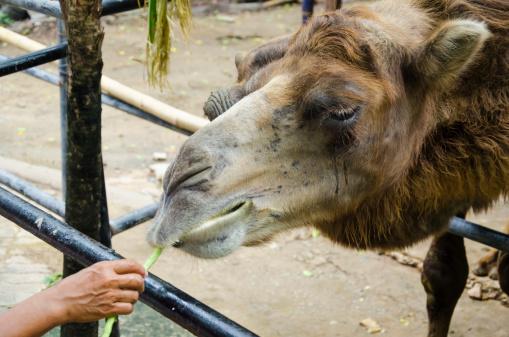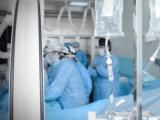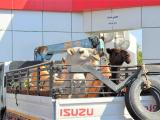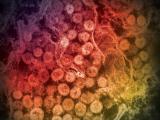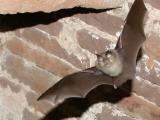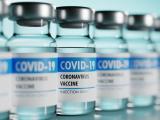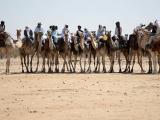In a new report, the World Health Organization (WHO) trained a brighter light on the predominant role of hospitals in the recent surge of MERS-CoV (Middle East respiratory syndrome coronavirus) cases in Saudi Arabia, while the Saudi agriculture ministry for the first time advised people who work with camels to take precautions to avoid the virus.
In its report released over the weekend, the WHO said that 60% of 128 recent MERS case-patients in Jeddah, Saudi Arabia, were infected in a hospital, and the same was true of more than two thirds of 37 recent case-patients in the United Arab Emirates (UAE).
The eight-page report is based on a WHO team's visit to Saudi Arabia from Apr 28 to May 5 to investigate the increase in MERS cases over the past several weeks. The agency issued a short statement about the team's findings last week, but the new report fills in more details.
A soaring case count
The agency says it has received reports of 536 MERS cases so far, with 145 deaths, and 330 of those have been reported just since Mar 27 of this year. Of the 330, 290, with 59 deaths, were in Saudi Arabia, 37 in the United Arab Emirates (UAE), 1 in Yemen, and 2 in Jordan.
Unofficial counts of the global MERS tally are considerably higher: the current list maintained by FluTrackers, an online infectious-disease message board, shows 584 cases.
The WHO team, along with local officials, analyzed 128 MERS cases that occurred in Jeddah between Feb 17 and Apr 26, the report says. The patients were treated in 14 hospitals in the city, with one hospital accounting for 45 cases and most of the rest for just 1 or 2 cases.
"More than 60% of the 128 cases are presumed to have acquired infection in a hospital setting, including 39 healthcare workers," the report says. Another third of the cases are thought to be primary cases, meaning patients who had no known connection to another case-patient.
Most of the Jeddah patients were male, and the median age was 48.5 years. Infected healthcare workers (HCWs) were more likely to be young and female and to have mild or no symptoms, but 15% had severe disease or died.
In screening of household contacts of the Jeddah patients, only 7 of 554 (1.3%) tested positive for the virus.
The WHO team also looked at 127 cases that occurred in places other than Jeddah and nearby Mecca since mid-march. Riyadh accounted for 86 of those, with 10 in Tabuk, 15 in Medina, 3 in Najran, and 13 in unspecified places.
UAE hospital cluster
The WHO says 37 MERS cases have been confirmed in the UAE since Mar 27, all of them in Abu Dhabi Emirate. Of those, 28 were part of one hospital cluster in Al Ain City. The first reported case was in a 45-year-old male shopkeeper who died on Apr 10. Contact tracing sparked by his case revealed 27 more cases in HCWs and social contacts.
More than two thirds of the patients in the cluster were HCWs, including ambulance attendants, the report says. One of them was the male nurse who became the first case-patient in the Philippines. Only one patient had severe disease.
Mysteries persist regarding the case of the 45-year-old shopkeeper, according to the report. He had no recent travel history or contact with animals, and the source of his infection remains unknown. Further, it is unclear whether the other patients in the cluster caught the virus from him or from non-human sources; investigations are continuing.
As reported previously, the WHO team found no change in the overall pattern of MERS-CoV transmission. That finding rested on four observations: little change in the spectrum of clinical findings, no further transmission sparked by cases exported to countries outside the Middle East, few instances of household transmission, and no increase in the size or number of household clusters.
As also noted previously, the team concluded that the Jeddah surge resulted from an increase in primary cases, which sparked hospital outbreaks that were exacerbated by a lack of systematic infection control measures.
Advice for camel workers
The report also includes specific advice for workers exposed to camels on farms and in slaughterhouses, something that has not been mentioned in other recent WHO documents.
It says workers should wear face protection "where feasible" and protective clothing, which should be washed daily, and that workers should not expose their family members to possibly contaminated clothing, shoes, or other items.
As in other recent statements, the WHO advises vulnerable people, such as those who have diabetes or certain other conditions, to avoid contact with camels and drinking raw camel milk. Also, the agency says, such people should not drink camel urine, which is reportedly used for medicinal purposes by some in the Middle East.
The WHO advice was echoed yesterday by an advisory from the Saudi agriculture ministry, in what appeared to be a first in a country where camels are culturally important and revered animals.
The ministry called on camel breeders and owners to wear masks and gloves when working with camels and to wash their hands before and after contact with them, according to a computer-translated statement posted on Avian Flu Diary, an infectious disease blog. Also, the ministry recommended boiling camel milk and cooking camel meat well.
The statement comes in the wake of several recent news reports in which camel owners and workers expressed shock and disbelief that camels can be the source of a dangerous virus.
Camels are known to carry MERS-CoV and are suspected to be an important source of human cases, but it is unclear how the virus travels from the animals to humans.
Similar safety recommendations for camel owners were included in a report from the Scientific Advisory Board of the WHO Collaborating Center for Mass Gathering Medicine (CCMGM). The group of mostly Saudi experts met in Riyadh Apr 28 and 29 to discuss the risk of infectious diseases related to this year's Hajj.
In a short report in the International Journal of Infectious Diseases, the group said camel owners "should use gloves and mask when handling ill animals" and use good hand hygiene when handling animals in general.
The group also said camel milk should be boiled before consumption, although the virus has not been found in camel milk. It added that camel sacrifices and contact with camels should be avoided during the Hajj.
In other conclusions, the board said the MERS threat does not warrant closing schools. The group said the basic reproductive rate for the virus (the number of additional cases generated by a new case in a susceptible population) is "definitely below 1 and probably below 0.5, clearly showing that the virus has no pandemic or even local epidemic potential."
See also:
May 11 Avian Flu Diary post with Saudi ministry warning on camels
May 10 Int J Infect Dis report from the CCMGM (landing page)
